Ptf1a binds to and activates area III, a highly conserved region of the Pdx1 promoter that mediates early pancreas-wide Pdx1 expression
- PMID: 17403901
- PMCID: PMC1900007
- DOI: 10.1128/MCB.01978-06
Ptf1a binds to and activates area III, a highly conserved region of the Pdx1 promoter that mediates early pancreas-wide Pdx1 expression
Abstract
The critical pancreatic transcription factor Pdx1 is expressed throughout the pancreas early but enriched in insulin-producing beta cells postnatally. Previous studies showed that the 5' conserved promoter regions areas I and II (Pdx1(PB)) direct endocrine cell expression, while an adjacent region (Pdx1(XB)) containing conserved area III directs transient beta-cell expression. In this study, we used Cre-mediated lineage tracing to track cells that activated these regions. Pdx1(PB)Cre mediated only endocrine cell recombination, while Pdx1(XB)Cre directed broad and early recombination in the developing pancreas. Also, a reporter transgene containing areas I, II, and III was expressed throughout the embryonic day 10.5 (E10.5) pancreas and gradually became beta cell enriched, similar to endogenous Pdx1. These data suggested that sequences within area III mediate early pancreas-wide Pdx1 expression. Area III contains a binding site for PTF1, a transcription factor complex essential for pancreas development. This site contributed to area III-dependent reporter gene expression in the acinar AR42J cell line, while PTF1 specifically trans-activated area III-containing reporter expression in a nonpancreatic cell line. Importantly, Ptf1a occupied sequences spanning the endogenous PTF1 site in area III of E11.5 pancreatic buds. These data strongly suggest that PTF1 is an important early activator of Pdx1 in acinar and endocrine progenitor cells during pancreas development.
Figures

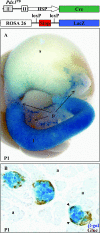

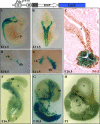
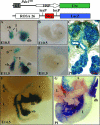
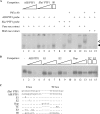
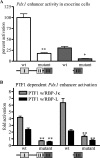
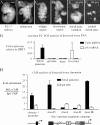
References
-
- Bossard, P., and K. S. Zaret. 2000. Repressive and restrictive mesodermal interactions with gut endoderm: possible relation to Meckel's diverticulum. Development 127:4915-4923. - PubMed
-
- Boyer, D. F., Y. Fujitani, M. Gannon, A. C. Powers, R. W. Stein, and C. V. Wright. 2006. Complementation rescue of Pdx1 null phenotype demonstrates distinct roles of proximal and distal cis-regulatory sequences in pancreatic and duodenal expression. Dev. Biol. 298:616-631. - PubMed
-
- Brissova, M., M. Shiota, W. E. Nicholson, M. Gannon, S. M. Knobel, D. W. Piston, C. V. Wright, and A. C. Powers. 2002. Reduction in pancreatic transcription factor PDX-1 impairs glucose-stimulated insulin secretion. J. Biol. Chem. 277:11225-11232. - PubMed
Publication types
MeSH terms
Substances
Grants and funding
- 5T32 DK 07563/DK/NIDDK NIH HHS/United States
- R01 DK065131/DK/NIDDK NIH HHS/United States
- P30 EY008126/EY/NEI NIH HHS/United States
- P30 CA068485/CA/NCI NIH HHS/United States
- CA 68485/CA/NCI NIH HHS/United States
- R01 DK 50203/DK/NIDDK NIH HHS/United States
- R01 DK050203/DK/NIDDK NIH HHS/United States
- T32 DK007563/DK/NIDDK NIH HHS/United States
- P01 DK042502/DK/NIDDK NIH HHS/United States
- EY 08126/EY/NEI NIH HHS/United States
- U01 DK072503/DK/NIDDK NIH HHS/United States
- U01 DK 72503/DK/NIDDK NIH HHS/United States
- DK 042502/DK/NIDDK NIH HHS/United States
- U19 DK042502/DK/NIDDK NIH HHS/United States
- P30 HD015052/HD/NICHD NIH HHS/United States
- R01 DK 65131-01/DK/NIDDK NIH HHS/United States
- HD 15052/HD/NICHD NIH HHS/United States
- P30 DK020593/DK/NIDDK NIH HHS/United States
LinkOut - more resources
Full Text Sources
Molecular Biology Databases
Miscellaneous
